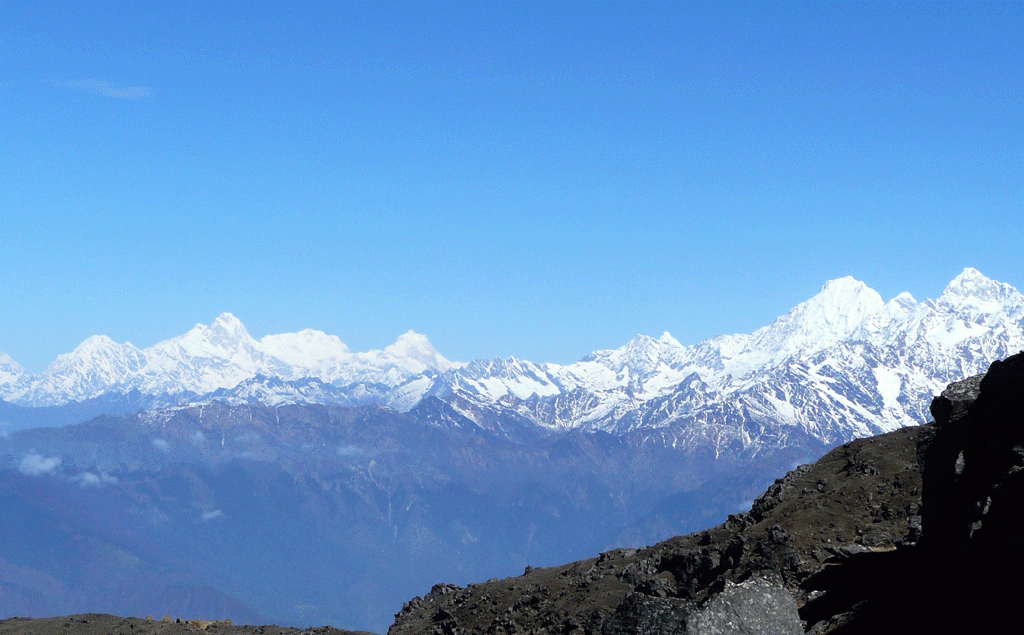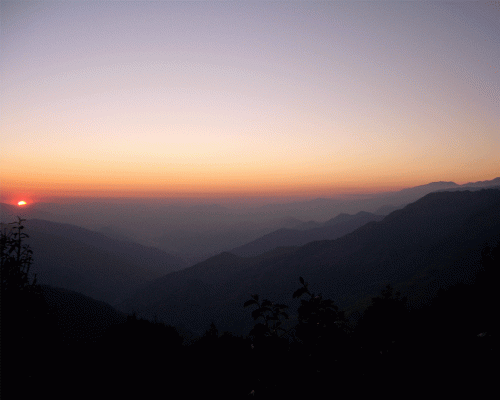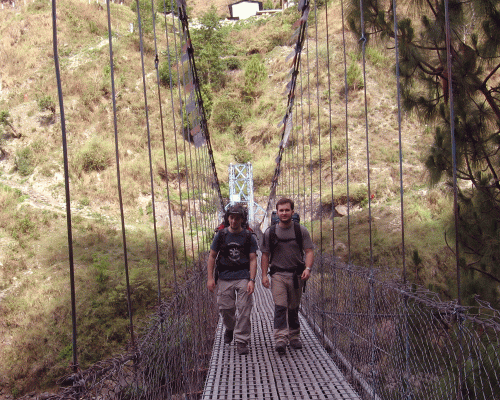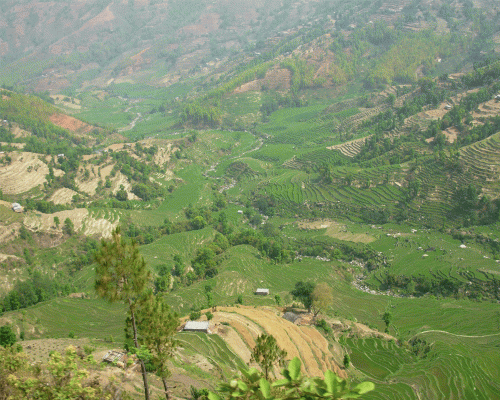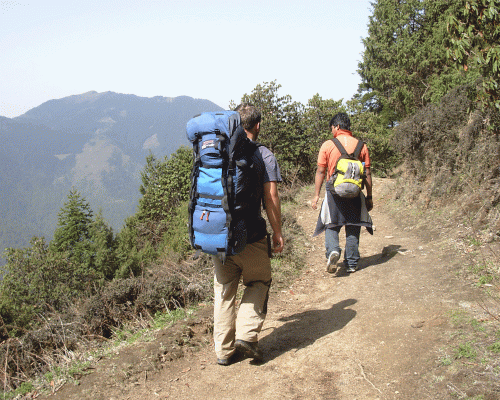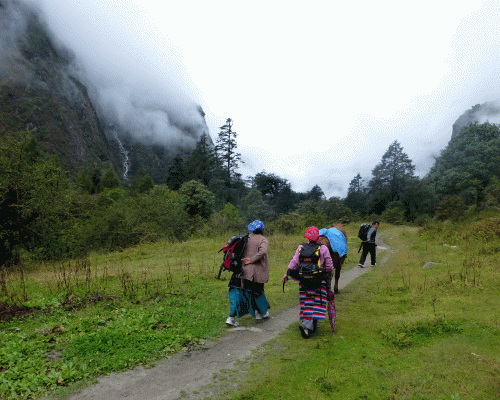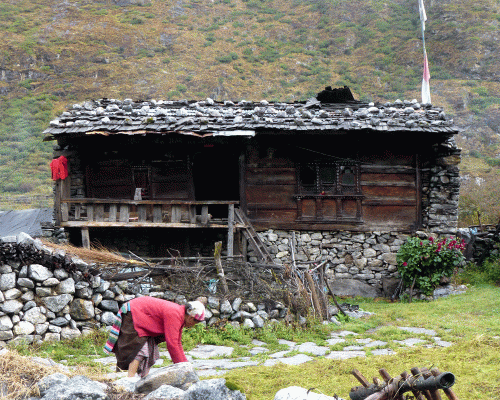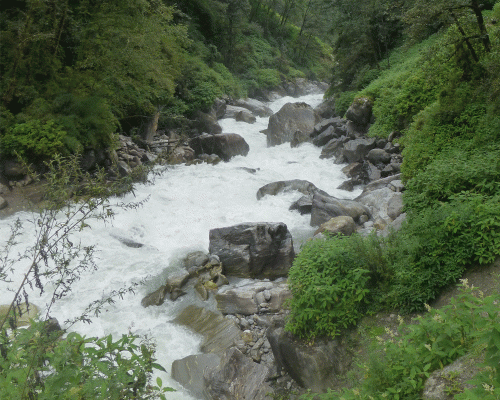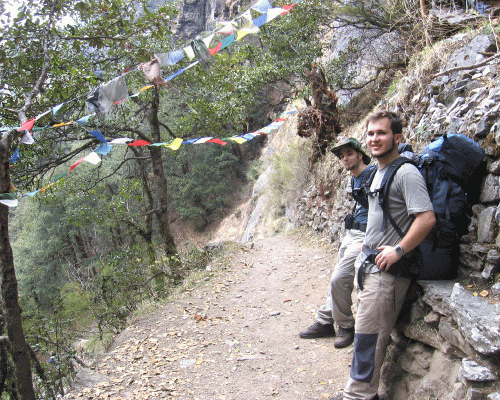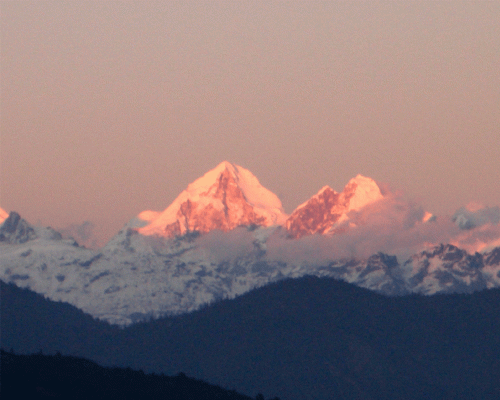The Helambu Trek is a perfect short adventure, just north of Kathmandu Valley. It’s one of the easiest treks in Nepal but it feels worlds away from the busy city. The peaceful trail takes you through a hidden gem of nature. You walk through colourful forests of rhododendrons and bamboo, with the sound of waterfalls around you most of the time.
The local Hyolmo culture adds to the charm, offering a unique mountain experience. As you climb higher, the views open up to breathtaking mountains. The highest point, Tharepati, sits at 3,460 meters. You can see the snow-covered Langtang, Ganesh Himal, and other majestic peaks from here. Each day brings you closer to stunning valleys and serene forests.
The trek begins from Sundarijal or Melamchi Bazar if you want shorter, which are both short rides from Kathmandu. The path is easy to follow, passing through Tamang villages that offer warm hospitality. Along the way, you can spot views of the Langtang, Annapurna, and Everest mountain ranges, making the trek unforgettable.
Unlike other high-altitude treks, this one stays between 1400m and 3,600m, which means fewer steep climbs and more comfortable weather. It’s the perfect trek for those looking to enjoy nature without too much effort.
Best season for Helambu Trek
Choosing the best season for the Helambu trek is important to ensure you enjoy clear skies, pleasant temperatures, and safe trails. Different seasons offer unique experiences, but the weather can greatly affect your trek.
Let’s explore the ideal times to go:
Spring (March to May)
This is the ideal time for the Helambu trek. Moderate temperatures make trekking comfortable. Rhododendrons bloom, covering the trail with vibrant colours. The skies are mostly clear, offering stunning views of the surrounding mountains. Days are warmer, making the hike enjoyable for most trekkers.
Autumn (September to November)
Another great season for trekking, autumn offers clear skies and pleasant temperatures. The cool, crisp air at higher altitudes is perfect for walking. The weather is stable, with fewer chances of rain, providing the best visibility of the Langtang, Ganesh Himal, and other peaks. It is also one of the most popular trekking times in Nepal.
Winter (December to February)
Winter is cold, especially at higher altitudes. Snow can cover parts of the trail, especially above Melamchi, making it more difficult. However, this season is perfect for trekkers who prefer solitude, as fewer people hike during these months. The skies are usually clear, but be prepared for freezing temperatures, especially at night.
Monsoon (June to August)
This is the least ideal time for the Helambu trek due to heavy rainfall. Trails can become slippery. Leeches are common, and landslides may occur in some areas. However, the landscapes are lush and green, and the forests are full of life.
It is best for trekkers who don’t mind the rain and want a quieter, more challenging experience.
What to Expect in Helambu Trekking
The Helambu trek offers more than just beautiful landscapes. It provides a full experience of cultural immersion, stunning natural beauty, and a deep connection to Buddhist spirituality.
As you journey through the trek, you’ll interact with local Tamang and Hyolmo communities who preserve their ancient traditions.
Additionally, you’ll also encounter Buddhist monasteries and sacred sites, giving the trek a spiritual depth that enhances the peaceful, reflective nature of the adventure.
Cultural Significance
The Helambu trek takes you through villages rich in Hyolmo and Tamang culture. Locals in the region follow unique traditions that have been passed down for generations. You’ll see traditional houses, and local farming practices, and experience warm hospitality.
Villages like Tharepati and Melamchi Ghyang offer a chance to witness the simplicity of mountain life. The cultural diversity makes this trek a unique experience.
Scenic Splendor
Expect stunning views of snow-capped peaks throughout the Helambu trek. Rhododendron and bamboo forests line the trails, creating colourful landscapes. You’ll trek through green valleys, offering breathtaking views of Langtang, Ganesh Himal, and Dorje Lakpa.
The waterfalls along the way add to the beauty. Every turn brings a new natural wonder, from peaceful rivers to distant snowy peaks. The variety in scenery makes each day exciting.
Buddhist Spirituality
Buddhist monasteries and prayer flags are found throughout the trek. These add a deep spiritual connection to the journey. You will pass through sacred sites, such as ancient stupas and monasteries in villages like Tarkeghyang.
The sound of prayer wheels and monks chanting fills the air, creating a peaceful atmosphere.
NOTE:It is recommended that you should arrive in Kathmandu a day earlier before you start your trek (if you do not have a day tour of Kathmandu scheduled). And If you have scheduled a Kathmandu day tour you should arrive two days prior to the actual day of trekking.
If you are able to arrive a day earlier, it will be best for you as you will get some time to rest, know about the trekking you are doing, get info about the trekking routes, and get time to buy trekking equipment if necessary. Adding some extra days beside actual trekking days will help you enjoy your trip to Nepal to the fullest without having to worry about any preparations, flight delays, and missing international flights.
